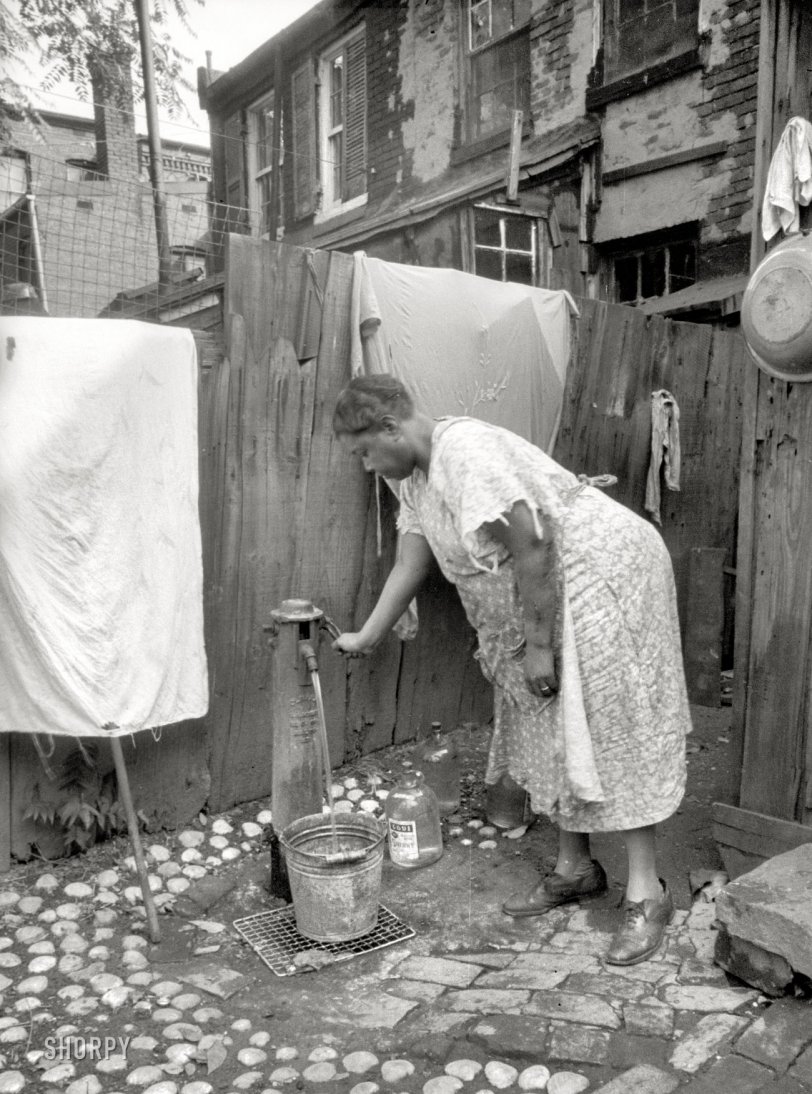


Framed or unframed, desk size to sofa size, printed by us in Arizona and Alabama since 2007. Explore now.
Shorpy is funded by you. Patreon contributors get an ad-free experience.
Learn more.

- Tough Guys
- Lost in Toyland
- And without gloves
- If I were a blindfolded time traveler
- Smoke Consumer Also Cooks
- Oh that stove!
- Possibly still there?
- What?!?
- $100 Reward
- Freeze Frame
- Texas Flyer wanted
- Just a Year Too Soon
- WWII -- Replacing men with women at the railroad crossing.
- Yes, Icing
- You kids drive me nuts!
- NOT An Easy Job
- I wonder
- Just add window boxes
- Icing Platform?
- Indiana Harbor Belt abides
- Freezing haze
- Corrections (for those who care)
- C&NW at Nelson
- Fallen Flags
- A dangerous job made worse
- Water Stop
- Passenger trains have right of way over freights?
- Coal
- Never ceases to amaze me.
- Still chuggin' (in model form)
Print Emporium
Washington Water: 1935

July 1935. "Outside water supply, Washington, D.C. Only source of water supply winter and summer for many houses in slum areas. In some places drainage is so poor that surplus water backs up in huge puddles." These municipal water taps (or pumps -- they have crank handles) appear in several photos from this series. I wonder if any survive. 35mm negative by Carl Mydans. View full size.
Want the one in our yard?
We renovated the garage behind our Southeast DC rowhouse last year and removed a non-functioning pump to make room (barely!) for our car. I've held on to the remains, but it may be time to send it to the dump. The lettering is partially illegible, but the word CLIMAX is printed clearly in a semicircle on top with words to the effect "C.M. KEMP MFG. CO. BALTO MD" below. I don't know how it worked, but I can see that about 2 feet of the pump was originally below grade.
Re: They survive!
Because we didn't own the place, we didn't let the water run for longer than a second, but I got the impression that it operated more like a faucet based on the solid flow of water coming out.
If I remember correctly, you moved the handle down and towards you. That moved the faucet head moved down and the water poured out. If you look at the image, you can see how the rectangular plate behind the faucet head is roughly the same size as the piece behind it. (I don't know the proper terminology.) You can see the empty squarish space above the faucet head and imagine how the metal faucet head would slide down to get where it is.
I hadn't thought about freeze damage... we were all just so amazed by this cool piece of history. I can't remember what the pump said. I really wish I had kept the photos I took of it, but when we didn't get the house, I deleted them all.
If you're interested, I can send you the address if you want to drop by and bug the new owner.
Speculation, but ...
I think you nailed it Dave. I bet it also drained back to below grade, whenever it was shut off.
Garden hose
I just really looked at this in full size, and see she's wearing stockings. Good Lord - stockings to go pump some water to wash the dishes after dinner.
Sometimes I think people try so hard it's ... poignant.
They survive!
One of the Capitol Hill NE houses my wife and I (unsuccessfully) bid on had one. Red in color (didn't look to see if the paint was original or not), it still works and is now protected in a newer garage. It was one of the great features of the house.
[Fascinating. Was it more like a pump or a faucet? What did the lettering say? I wonder if the crank operated a valve below ground level, as a safeguard against freeze damage. Questions, questions. - Dave]
Not such an ancient thing
When I was 3 or 4 (in 1961 or 1962) my elderly farmer's wife babysitter in Benton Harbor, Michigan, had only an outside pump like this. And an outhouse, of course. Years later, when we visited them, their kids had moved them into a two storey frame house with indoor plumbing, nearby. Very uptown!
























On Shorpy:
Today’s Top 5